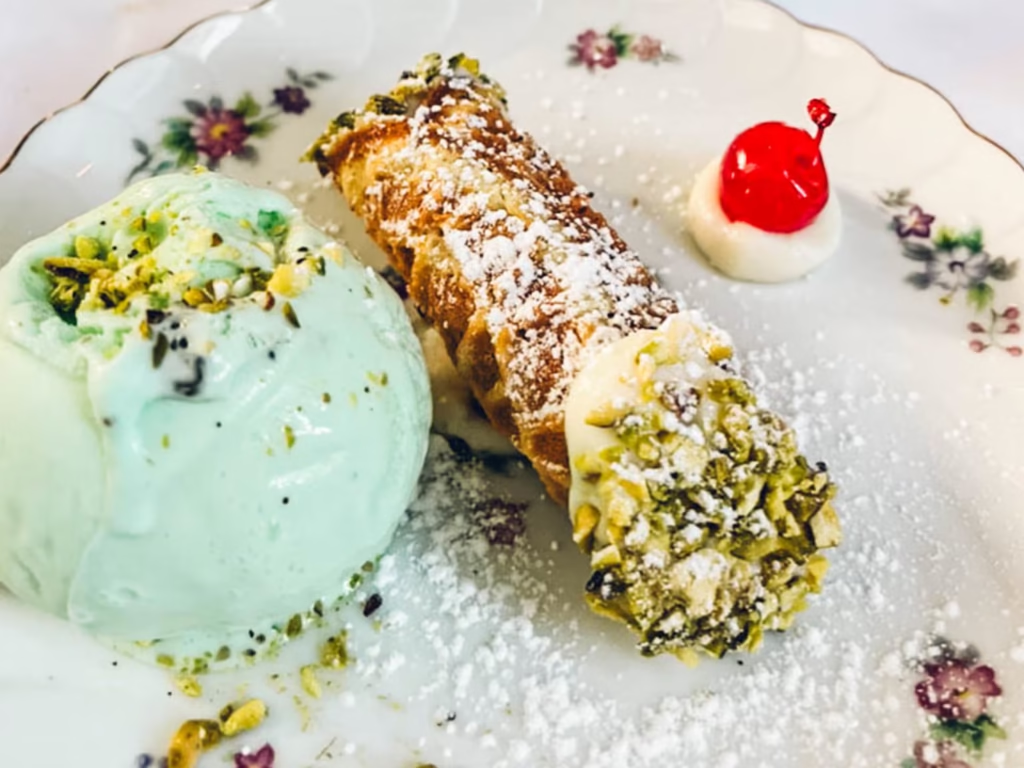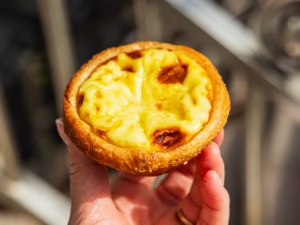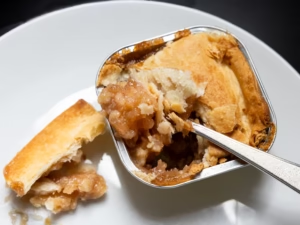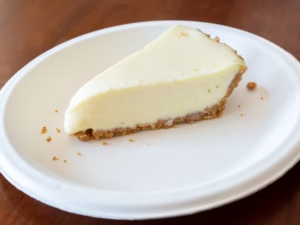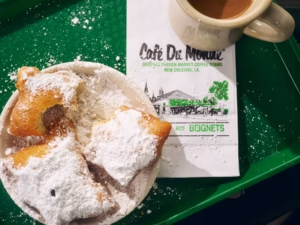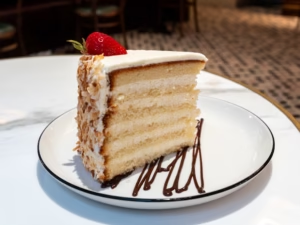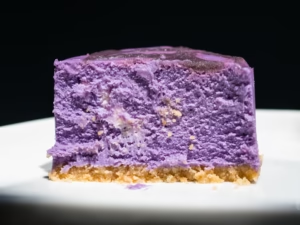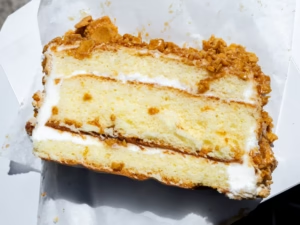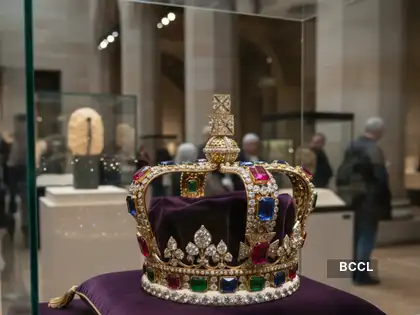Every city in America has a dish that speaks louder than words. A sandwich can define an attitude; a coffee, a neighborhood. But desserts—those indulgent, joy-drenched finales—carry something even deeper. They’re about memory, pride, and invention. They’re about grandmothers who baked before dawn, small-town diners that never closed, and chefs who turned nostalgia into something extraordinary.
This guide doesn’t try to eat the entire country. Instead, it takes a spoonful of seven cities that represent the sweetness of the nation’s imagination—from the creamy ube cheesecake of Seattle to the flambéed spectacle of tiramisu in Washington, D.C. Think of it as a road trip made of sugar, culture, and the quiet art of indulgence.
new york city | egg tart
There’s a point in Brooklyn’s Sunset Park when the smell of baked custard stops you cold. It seeps out from Xin Fa Bakery, a quiet storefront that hides one of the most transcendent desserts in New York City: the Portuguese-style egg tart.
The crust is all architecture—layers of pastry folded until the edges flake like parchment under a fork. The custard is silk set on tremble, not too sweet, with just enough caramelization to taste a whisper of smoke. You eat it standing on the sidewalk, maybe still warm, powdered with city air.
What makes the egg tart special here isn’t its exoticism, but its place in the city’s living fabric. Immigrant hands perfected this recipe for locals who crave warmth and precision. In a borough built on stories of arrival, the egg tart feels exactly right: a dessert that never stops evolving but never forgets its roots.
atlanta | peach cobbler
In Atlanta, the word “cobbler” means something spiritual. And at Ivy’s Heavenly Cobbler, that spirituality is baked in butter. Here, peaches from local farms simmer beneath a crust that’s closer to biscuit than pie—a rich, buttery layer that breaks like soft armor.
This dessert embodies the warmth of Southern storytelling. Every spoonful tastes like family, like porch lights after a humid night. The peaches are tender but not mushy; the spice—mostly cinnamon and nutmeg—comes in like a soft hum. The result is not just dessert, but geography in edible form.
Georgia’s identity is inseparable from its fruit, and Ivy’s cobbler has become a kind of edible ambassador, a declaration that something so simple can be sacred when done right. You could call it comfort food. Locals just call it home.
miami | key lime pie
There’s a specific kind of sunlight in Miami—the kind that turns everything into chrome, citrus, and desire. To match that brightness, the city built its dessert legend: the key lime pie. And the one from Joe’s Stone Crab has no rival.
Perfectly tart, balanced by its semi-frozen texture and a crust that snaps like a secret, Joe’s version is the definition of Florida cool. It’s not a sugary bomb but a controlled composition of acidity and cream. The limes are local, the recipe is a century old, and the presentation—served beside a can of whipped cream—feels almost cinematic.
The beauty of Joe’s is that you don’t even need a table reservation. You can grab it from their takeaway counter and eat it standing in the salty air. It’s a dessert that feels alive in the climate that created it—sharp, refreshing, fleeting.
new orleans | beignets
New Orleans doesn’t do quiet desserts. It does powdered chaos and jazz. At Café Du Monde, open since 1862, the beignet is an institution—a triangle of fried dough baptized in powdered sugar, served with chicory coffee and a brass-band soundtrack drifting down Decatur Street.
The first bite is a paradox. Airy yet dense. Sweet yet neutral enough to soak in whatever the moment offers—music, laughter, the Mississippi breeze. The experience is less about eating and more about participating in a ritual.
To call it “touristy” misses the point. Café Du Monde is a cultural checkpoint, an edible monument that connects the Creole past to the tourist present. Every city needs a symbol. New Orleans just chose to make theirs out of dough and sugar.
charleston | coconut cake
At Peninsula Grill in Charleston, dessert arrives like ceremony. The famed coconut cake, six layers tall and nearly as storied as the city’s cobblestone streets, is an ode to Southern grandeur.
Each forkful reveals the quiet power of simplicity: spongy cake soaked in coconut milk, layered with whipped frosting, and coated in delicate shredded coconut that glimmers like sea foam. It’s the kind of dessert that doesn’t just end a meal—it defines it.
When the restaurant first opened nearly three decades ago, this cake appeared on the menu the second night and never left. Since then, it’s become one of the South’s most beloved exports—now shipped nationwide to homes that crave Charleston elegance by mail order.
There’s a reason the coconut cake feels eternal: it’s sweet, yes, but also architectural, nostalgic, and slightly aristocratic, just like the city itself.
seattle | ube cheesecake
In Seattle’s International District, color matters. The deep violet hue of the ube cheesecake at Hood Famous Café & Baris as photogenic as it is flavorful. This Filipino-inspired dessert fuses heritage with Pacific Northwest minimalism: creamy, earthy, and stunning.
Ube, a purple yam native to the Philippines, lends natural sweetness and a nutty, vanilla-like aroma to the dense cheesecake base. The buttery cookie crust offers contrast, while the overall texture walks a delicate line between indulgence and restraint.
For the Filipino-American community in Seattle, this dessert is more than a treat—it’s a cultural statement, a reminder that identity can be deliciously layered. When paired with their iced ube latte, it becomes a full-circle moment: history, art, and comfort in one bite.
san francisco | coffee crunch cake
In Japantown, Yasukochi’s Sweet Stop makes a dessert that can convert even the coffee-averse: the coffee crunch cake. Layers of chiffon sponge, coffee whipped cream, and brittle toffee shards create an equilibrium between bitterness and sweetness that defines the Bay Area’s restrained palate.
The texture is a marvel—spongy yet stable, airy but grounded by its caramelized crunch. It’s a flavor that feels distinctly Californian: light, modern, multicultural. The dessert has been beloved for decades, becoming a quiet symbol of old San Francisco craftsmanship amid the city’s changing skyline.
Every slice is an echo of a time when neighborhood bakeries were more than businesses—they were community centers with ovens. The fact that you still need cash to buy it feels like a blessing in disguise.
impression
What unites these desserts—beyond sugar—is their storytelling. Each reflects its city’s rhythm: New York’s layered multiculturalism, Atlanta’s southern pride, Miami’s citrus pulse, Seattle’s immigrant artistry, and Charleston’s old-world charm.
Dessert, in the American sense, has always been democratic. It belongs to no single region and every region at once. It’s the taste of comfort and creativity, of immigrants and ancestors, of roadside diners and Michelin tables.
To travel for dessert is to travel for history. It’s to understand that food isn’t just sustenance—it’s a form of memory, a bridge between places, and, sometimes, the best reason to stay a little longer after dinner.
No comments yet.

